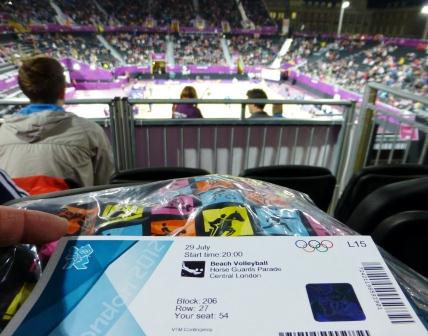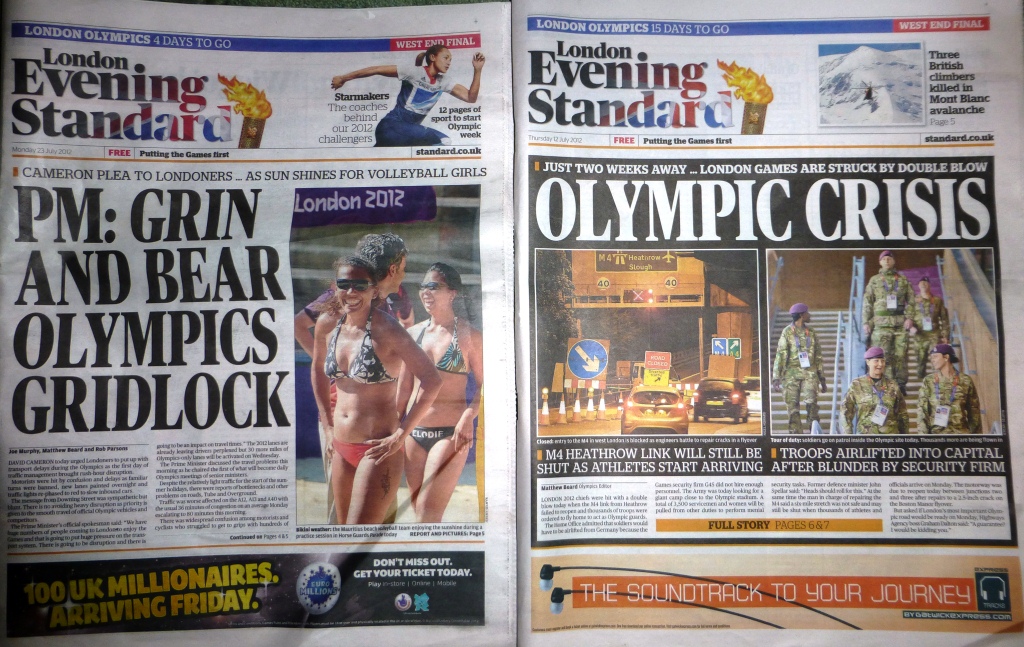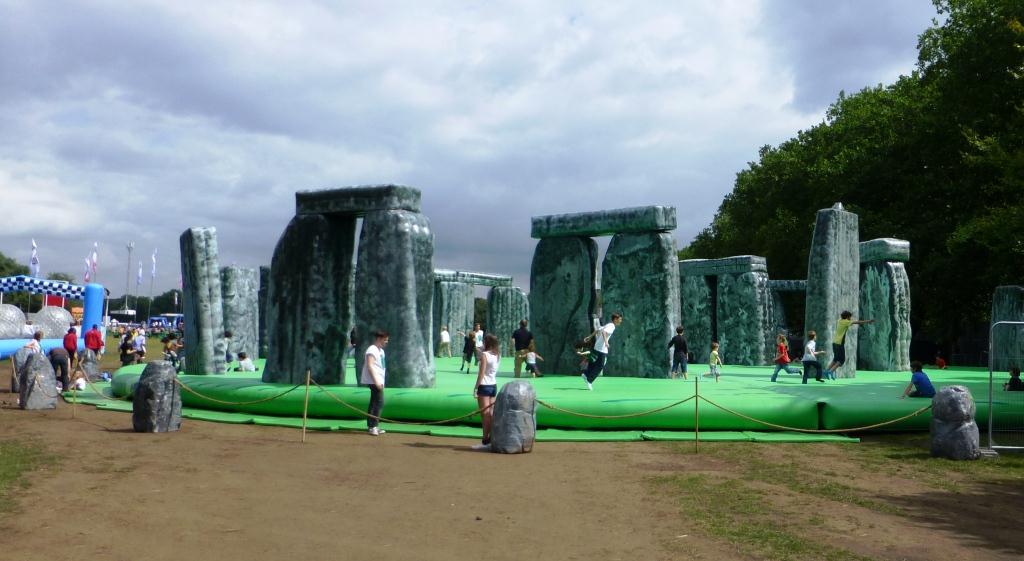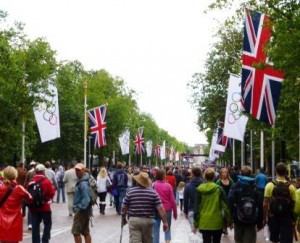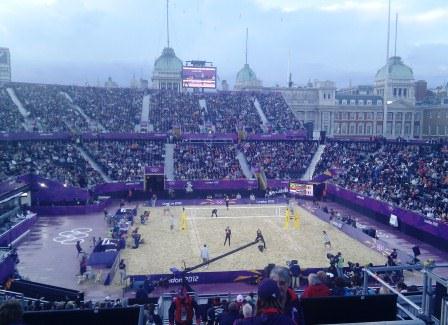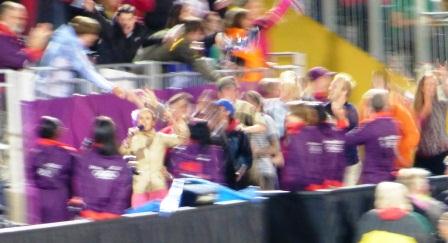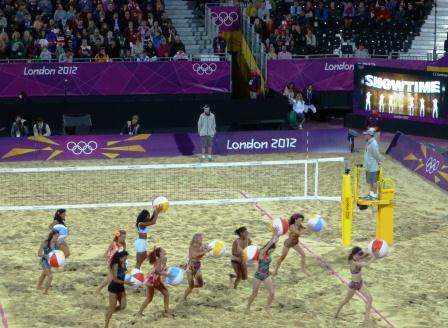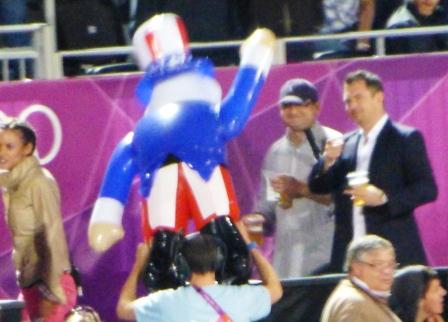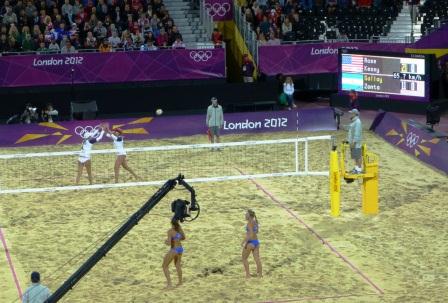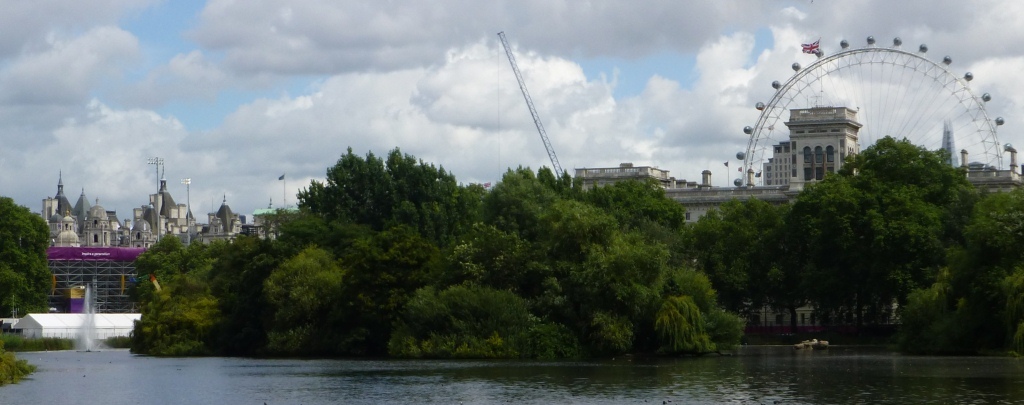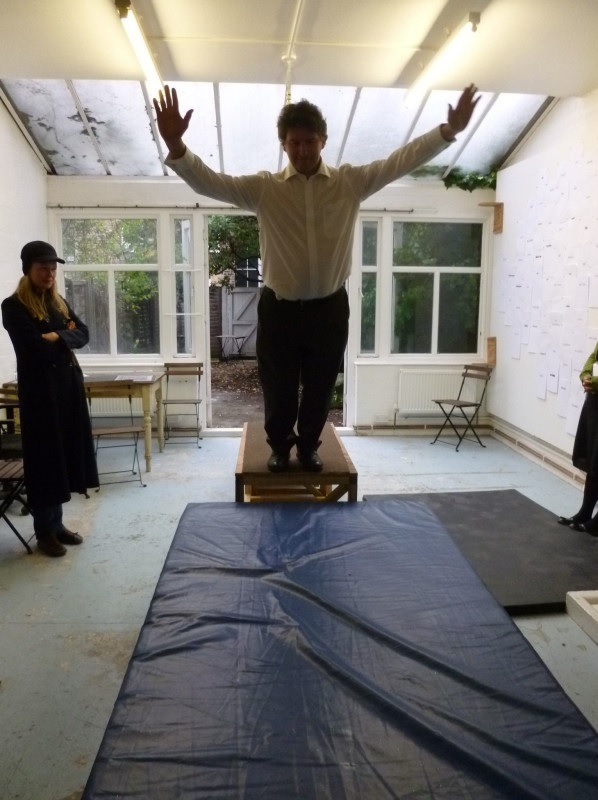
The photo above is not, as my friends at Love Art London tweeted, me doing a ‘flying squirrel impression’ but me being a serious, living artwork in Amy Sharrocks’ studio in Chelsea — and she’s a real artist! To my mind it the pose somewhat resembles a rather unenthusiastic induction into some alien giant lizard-worshipping cult crossed with a pathetic attempt to obtain the worst Olympic gymnastic score of all time.
But despite making me look rather odd, the photo — taken by one of Amy’s friends and passed on to me by Love Art London — is effective in illustrating the concept behind the performance art that Amy is currently working on. It’s all about falling. And in the photo I’m just on the cusp of falling — that point when I’ve leant so far forward I’ve breached the point of no return where I know the what’s coming is inevitable but mostly out of my control.
I’d been curious, not to say suspicious, that anyone could produce art about people falling over and that’s why I signed up for the Love Art London studio visit — and the prospect of leaping around on crash mats also appealed (an invigorating change from the usual standing respectfully in front of an artwork to muse upon its qualities).
The studio in which Amy is based for her On Falling residency is a piece of history in its own right — having been used by the renowned sculptor, Elisabeth Frink — apparently she appeared on a commemorative stamp as a woman of achievement in 1996 and is responsible for the curious Shepherd and Sheep sculpture that’s displayed prominently in Paternoster Square.
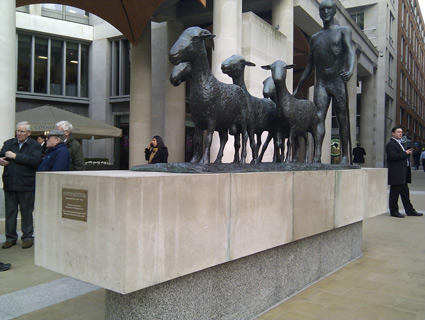
The studio is part of a block that was purpose-built in the nineteenth century for artists in Chelsea and is still leased out for limited periods to contemporary artists.
Amy started by showing us a wall of ‘falling words’ (to the right of the photo) that she’d arranged thematically — so negative words like, say, stumble or drop were clustered in one corner and more positive words like dive or cascade would be elsewhere — similarly with other interpretations. It was quite thought-provoking but not exactly what I’d call art.
In fact, it didn’t dissuade me from thinking that the whole thing was a bit, well, bonkers.
Then Amy took us through a photographic falling wall of about a hundred or so images of falling — some were of Amy herself — impressive profile silhouettes of her in the ‘about-to-topple’ position that I’m captured in above, although her images are far more graceful. There were other photos from the work Amy has been doing in the community about falling (and some of her previous works) plus more general images — some quite well-known and, in cases, harrowing, like people falling from the World Trade Center on 9/11.
Amy also mentioned some of the other work she’s done around London and I was pleasantly surprised that she’s the artist behind the Museum of Water — another slightly bizarre but strangely thoughtful initiative that I’d read about this in (probably) the Evening Standard (although it may also have been in Time Out or on Londonist). I’d been really interested in going along to the Soho installation when I’d read about it (but all is not lost, apparently it’s touring the country with it from the autumn onwards).
The water that’s preserved in the museum is water in the loosest sense — one exhibit is a six-year old girl’s phial of tears, others are donated urine in its various appearances. (At this point I shall resist the temptation to pun about taking the proverbial.)
I didn’t realise when I booked with Love Art London to come on the Falling event that Amy was behind both initiatives — but maybe there was something a bit subconscious going on? Perhaps Amy’s imaginative selection of subjects aligns with my own interests?
Mind you, I doubt I’ll be participating in an event she’s hoping to organise in 2015 — a mass swim across the Thames at the point where it’s crossed by Tower Bridge. Amy’s hopeful of getting Boris Johnson onboard — or maybe overboard — for this extension of her Swim London event. (Like the Museum of Water, this Thames-swimming project has had a fair bit of coverage in the press.)
Captivating as all Amy’s pictures and past work was, I was itching to start bouncing around on the crash mat — it was originally located in the garden but had to be dragged into the studio itself as it began to rain. And stepping off a ramp that’s possibly slippy and falling on to a crash mat that’s been rained on would no doubt set health and safety alarm bells ringing somewhere. (Coincidentally, despite the apparent minimal risk involved in falling from a few feet on to a mat that seems to be adequate for pole valuting, there has been some serious head-scratching by powers that be about Amy’s plans to involve the public in her Falling performance art.)
When I thought it was about time that we all started falling over in earnest, Amy turned the tables on us would-be art connoisseurs and asked for us to share our ‘falling experiences’. This was surprisingly interesting — people talked about the experience of falling asleep (where one of our number said there’s a scientific name for the feeling you sometimes get of suddenly dropping when you’re on the cusp of falling asleep).
This discussion was very interesting, covering many different types of falling, and made me understand, for the first time, that perhaps Amy had found a subject that was both profoundly universal and open to many different interpretations.
And then, eventually, we were able to put the theory into practice. I was second up after our Love Art London host, who’d done it before. Falling face first, from a height of less than a metre into a crash mat seems simple –it’s nothing like as scary on paper as some of the highwire and zipwire course I’ve done — I fastened myself in the Trossachs (sounds like a Les Dawson joke) to a Go Ape! zipwire that was 400m long and 150ft above a valley.
But in those instances there’s something that will support you (the fear of falling is of anything going wrong) whereas to fall voluntarily, even from a small height, with no support is a peculiarly unsettling experience. There is definitely a split-second when you realise there’s no going back and a bit of panic sets until until you’ve worked out the best way to break the fall. (I think I bottled it a little by bending my legs to decrease the momentum).
One of the most interesting observations Amy makes about watching many people falling in this way is how quickly people get up. Being prone on your front, especially with others gathered around, is arguably an instinctively vulnerable position and while in this type of environment participants don’t feel physically threatened, they have no control or knowledge of the way that the spectators are viewing them — a situation with which, it was suggested, women were particularly uncomfortable in public.
About half-a-dozen of us had a go at falling — it certainly wasn’t obligatory — and a couple decided to fall backwards, which must be more nerve-wracking to do at the start but does avoid the face-down indignity afterwards. We all had a really interesting and open sharing of our experiences once we’d fallen. And we’d had so much fun talking and falling that we overran and had to head home (or to the pub).
But was it art? Well, officially, it definitely is as Amy is supported by the Royal British Society of Sculptors, amongst others. However, I’d come away from the event having been made to view something as apparently obvious and familiar in a much different and thought-provoking way — and surely that’s the very purpose of all good art in its widest sense?

